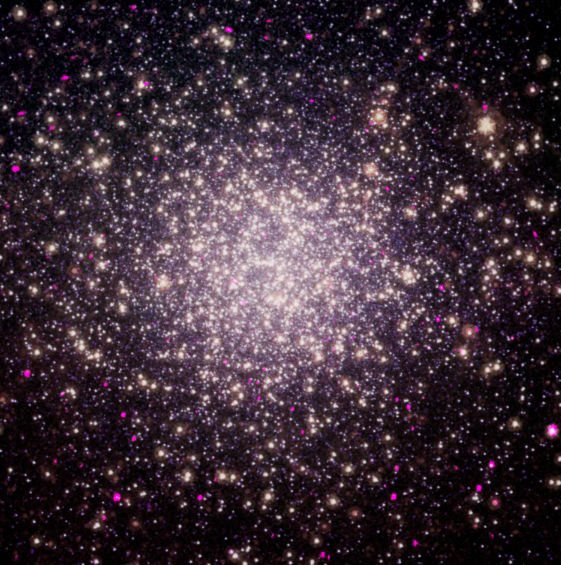NASA's Chandra X-ray Observatory has provided valuable insights into the predatory behavior of "spider pulsars," a group of deceased stars, as they consume companion stars in their vicinity.
The observation, focused on the globular cluster Omega Centauri, sheds light on the mechanisms through which these spider pulsars interact with their stellar companions.

NASA on Spider Pulsars
NASA noted that a pulsar is the dense core left behind when a massive star undergoes a gravitational collapse, forming a neutron star. Rapidly rotating neutron stars can emit radiation beams, similar to a lighthouse beam, creating pulsars.
Some of these are millisecond pulsars and can spin at incredible speeds, ranging from dozens to hundreds of times per second. Spider pulsars represent a unique subtype of millisecond pulsars, earning their name from the havoc they wreak on smaller companion stars in orbit around them.
The outer layers of these companion stars are systematically stripped away by energetic particle winds emanating from the spider pulsars.
A recent discovery by astronomers using the Parkes and MeerKAT radio telescopes found 18 millisecond pulsars in Omega Centauri, located approximately 17,700 light-years from Earth.
Subsequently, a pair of astronomers from the University of Alberta examined Chandra data of Omega Centauri to identify millisecond pulsars emitting X-rays. Five of the 11 X-ray-emitting millisecond pulsars were identified as spider pulsars that were concentrated near the cluster's center.
The researchers extended their analysis by combining Omega Centauri data with Chandra observations of 26 spider pulsars across 12 other globular clusters.
Redback and Black Widow
The spider pulsars were categorized into two types based on the size of the companion star being consumed: "Redback" spider pulsars target companions with a mass between a tenth and half of the sun, while "black widow" spider pulsars focus on companions with less than five percent of the sun's mass.
The study revealed a distinct contrast between the two classes, with redback spider pulsars exhibiting higher X-ray brightness than black widows.
This correlation between X-ray brightness and companion mass provides evidence that the mass of the companion influences the X-ray emission from spider pulsars.
Chandra's detection of X-rays is believed to result from the collision of particle winds emanating from pulsars with the winds of matter blowing away from companion stars, generating shock waves similar to those produced by supersonic aircraft.
The close proximity of spider pulsars to their companions, typically one to 14 times the distance between the Earth and the moon, contributes to the significant damage inflicted on companion stars by the energetic particles.
According to NASA, this proximity aligns with theoretical models, indicating that more massive companion stars generate denser particle winds, resulting in stronger shocks and brighter X-rays when colliding with pulsar particles.
The research team's findings were published in the December issue of the Monthly Notices of the Royal Astronomical Society. They are also available in arXiv.
Related Article: NASA's Chandra X-Ray Telescope Gives a Breathtaking Collection of Cosmic Bodies You Only See on Sci-Fi Movies










